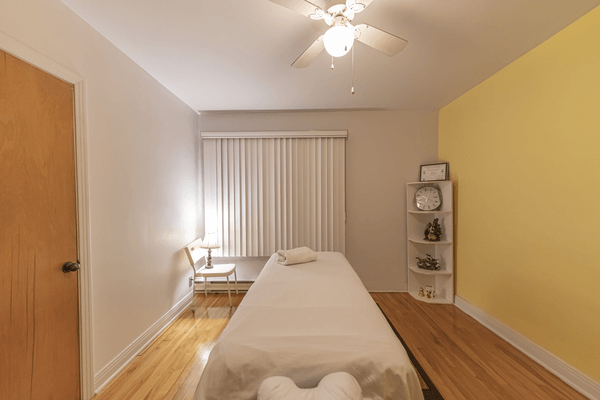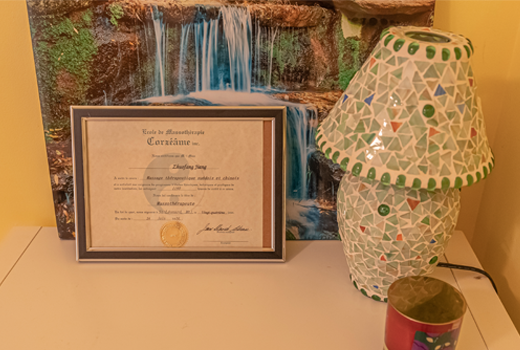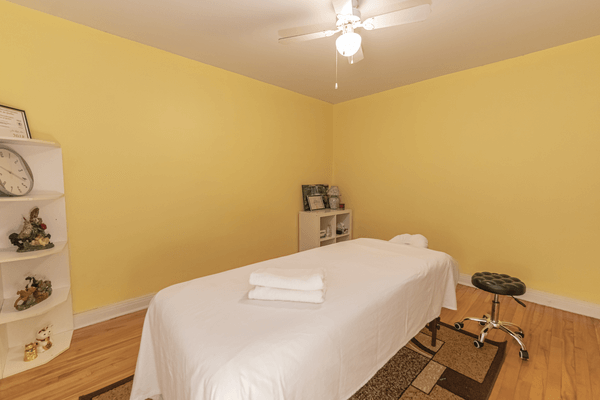Gentle massage can relax and stabilize the patient’s mood, relieve or eliminate psychological adverse reactions such as depression and anxiety.

Traditional Chinese Massage Techniques
Traditional Chinese Massage Techniques
The word massage consists of friction, pressing, Press correction, press correction, massage is composed of the words ** gradually evolved is a method of treating people with people. Traditional Chinese medicine massage mainly includes: pressing method, massage method, pushing method, pressing method, kneading method, pinching method, shaking method and hitting method.
Pressing method
Using fingertips or palms, pressing together rhythmically on the appropriate part of the patient’s body is called pressing method. Usually used, there are one-handed pressing method and two-handed pressing method. Clinically, on the rib cage or abdomen, one or both hands are usually used. One-handed pressing can also be used on the back or where the muscles are rich.
Massage
Massage means stroking. Use fingers or palms to give soft massage to the appropriate part of the patient’s body, which is called rubbing.
Pushing
Pushing before pushing hard. There are two types of massage methods commonly used in clinical practice: one-handed or two-handed. Because push and rub cannot be separated, push includes rub, and is often used for tu.

Kneading method
The doctor sticks his hands on the patient’s skin and kneads with slight rotating movements, which is called the kneading method. The kneading method is divided into one-hand kneading and two-hand kneading. For small areas such as the temples, you can knead with your fingers, and for large areas on the back, you can knead with your palms.
Handling method
Pick up the appropriate part of the skin with your hands and pick it up with a little force, which is called the holding method. Commonly used in clinical practice is the one-handed holding method with rich legs or muscles.
Pinch method
Pinch the skin and muscles from the bone surface with your fingers at the appropriate location, which is called the pinching method. There are some similarities between the pinch method and the grip method, but the grip method requires the full strength of the hands, and the pinch method focuses on the fingers. Heavier and lighter. ** Basic techniques commonly used, often combined with kneading.
Fluttering
It is a technique of fluttering and shaking ** . The movements should be quick, short, and even. About 10 vibrations per second is suitable, which is about 600 vibrations per minute. Vibration is inseparable from movement, so it is also called vibration.
Playing method
Playing method is also called percussion method. more clinical cooperation. ** After surgery. Of course, it can also be used alone if necessary. The play should be precise, soft and flexible.
Principles of massage in traditional Chinese medicine
The principle of traditional Chinese medicine massage is mainly through the action of meridians and acupoints to achieve the balance between various organs and corresponding tissues and organs, accelerate the metabolism of the body, and repair various body injuries , to achieve the purpose of prevention and treatment of diseases.
After the external cold pathogen invades the acupoints on the back of the human body, it will cause the meridians and collaterals to stagnate, and the qi and blood will not flow smoothly, resulting in back pain and even heartache.
After the massage, the meridians can be dredged, the qi and blood are smooth, and the local area is warm. Generally speaking, it is painless, slow, and can dispel cold and relieve pain. It can also be said that massage regulates the balance between organs, tissues and organs through meridian points, accelerates metabolism, repairs various injuries, and achieves the purpose of preventing and treating diseases. The following will discuss the principles of massage therapy from different aspects:
Action on muscle tissue
After high-intensity exercise, due to the massive production of lactic acid, a metabolic intermediate product, it is deposited in muscle tissue , muscle cramps, pain, and fatigue. If massage is used to treat tired muscles, it can promote the dissipation and excretion of lactic acid, relieve pain and eliminate fatigue.
Actions on skin tissue
Massage technique can strengthen the secretion of sebaceous glands and sweat glands, remove aging epithelial cells, improve skin metabolism, soften scars, enhance the body’s defense function but also enhance The skin’s radiance and elasticity, delay the skin’s.
Promote recovery after bone and joint injury
Correct massage therapy can accelerate the circulation of blood and lymph, eliminate edema, relieve adhesion, gradually increase the range of motion of dysfunction, and achieve normal or close to normal physiological function. Therefore, massage is conducive to the recovery of bone and joint injuries.
Improve blood circulation
Experiments show that massage can increase the number of capillaries, increase the diameter of the tubes, and greatly improve blood circulation. At the same time, it can also promote the reconstruction of the vascular network of the diseased tissue, restore the elasticity of the blood vessel wall, improve the smoothness of the pipeline, and reduce the external friction of blood flow.
Correction of abnormal anatomical position
Tuina can correct all diseases caused by abnormal anatomical position of tissue such as joint dislocation and tendon slippage.
Helps digestion
Experiments have shown that most gastric peristalsis is enhanced after massage of Pishu and Weishu points on the back for about 1 to 2 minutes; after massage of Zusanli point, most gastric peristalsis is enhanced weaken.
Regulating the nervous system
Massage can reduce the excitability of peripheral nerve endings, so it is often used for pain relief, such as neuritis and neuralgia.
Improve the psychology

